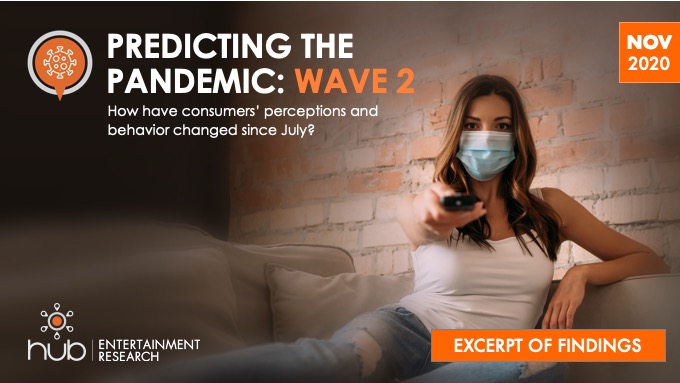One of the striking findings from our first wave of our pandemic research was just how much the pandemic had accelerated Americans’ embrace of new entertainment and communication platforms. Although subscriptions to traditional pay TV services stayed relatively flat during the first months of the pandemic, consumers eagerly added on SVOD services and more discovered that AVODs (like Pluto, IMDB TV, Tubi, the Roku Channel, and Crackle) could both ease their budget concerns scratch their itch for nostalgic, comfort viewing during a stressful time.
What’s more, many took advantage of the opportunity to watch just-released, first run movies from the comfort of their home, while others found that they could replicate the in-person co-viewing experience through video watch parties.
But TV was not the only time-filler during a period where people were spending more hours at home than ever before. Consumers discovered new content formats: viewing live-streamed performances on YouTube, Facebook, or Instagram; watching videogame competitions between star athletes, listening to podcasts, and scheduling family and friend check-ins through Zoom.
As part of Wave 1, we asked people which of these new behaviors they thought would continue on a long-term basis. In Wave 2, we’ll look to see how those predications have played out, by measuring which TV and other leisure behaviors have remained at a high level, and which have eased back to pre-COVID days. The study will also offer an update on attitudes toward COVID—how concerned consumers are now, how close they think we are to the end of the pandemic, whether they’ve become more comfortable returning to pre-COVID habits, and whom they’ll trust when deciding whether it’s safe to go back to normal.
The study is conducted among 3,000 U.S. consumers age 14-74 who watch a minimum of 1 hour of TV per week.
